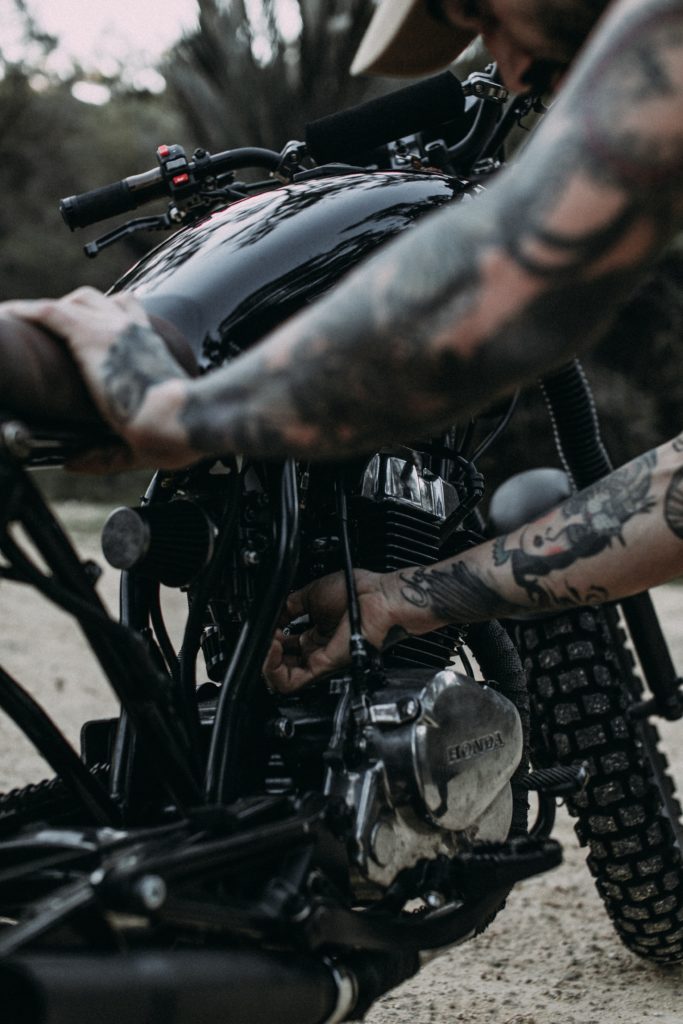1999 HARLEY-DAVIDSON FLT
Overview
A 1980 variant of the FLT Tour Glide was released in 1979. Two versions of the FLT Electra Glide were sold with the FLH: one featured a bigger frame and rubber engine mounts; the other had the 1,300 cc eight-cylinder engine, and the third had the third frame-mounted fairing. Front forks were given extreme steering geometry to enable the FLT frame, which was bigger and heavier than FLH, to handle adequately. The frame below the steering head was recessed to provide a proper steering lock. This article will focus on the 1999 Harley-Davidson FLT
FLHT
On January 1, 1983, the FLHT was unveiled. This motorcycle used the Electra Glide “batwing” fairing instead of the Tour Glide frame-mounted fairing. The FLHTP is the police variant of the FLHT. All 1984 FLs, except the entry-level FLH, came standard with a five-speed manual gearbox and the new rubber-mounted Evolution engine.
By the 1985 model year, all “Shovelhead” engines had been phased out. To accommodate the Evolution engine and rubber mounts, the FLH was reworked that year. There were no FLH models made after 1986; the FLT/FLHT was utilized in all Touring variants afterward. In 1996, the FLT Tour Glide, which debuted the modern Touring frame, was discontinued from the range. The FLTR Road Glide would use a smaller version of the Tour fairing in 1998. In 1999, the Twin Cam 88 engine was introduced to replace the Evolution engine on all large-framed Harley-Davidson models. 96 cubic inches was added to the Twin Cam engine in 2007 when it went from 88 cubic inches to 96 cubic inches.
Performance and Fuel Economy
The 1999 Harley-Davidson FLT Road Glide is almost identical to the 1998 model, aside from minor tweaks. Unlike previous hard-bag FLs, it employs the same rubber-mount, dual-shock frame, and saddlebags as the rest of the Harley Touring line. It was initially introduced on a rubber-mounted five-speed FLT Tour Glide in 1980 and has since been reworked for a more modern look; it is still based on the original design. Although the low-profile windshield is standard, H-D offers a number of alternative heights for this new fairing, giving it a more compact appearance. Also included is Harley’s newest AM/FM tape stereo sound system, which is installed in the fairing
It’s Got to be Harley!
Buying a Harley-Davidson is the only way to be accepted into the motorcycle enthusiast community. The price of a new Harley Davidson motorcycle is high. Because of this, you may save money by purchasing a secondhand Harley-Davidson motorbike through a dealer. It’s like purchasing an old vehicle: you need to do extensive research on each model. Don’t buy the cheapest motorbike you find if you want to save money.
Electra Glide
Between 1977 and 1984, the FLHS Electra Glide Sport, a modified variant of the FLH Electra Glide, was on the market. The cigar mufflers of the early models were replaced with staggered duals on the same side. An unfaired FLH Electra Glide Sport was relaunched in 1989 and continued through 1993 as the FLHS Electra Glide Sport, subsequently replaced by the FLHR Road King in 1994.
Road Glide
In the 1999 Harley-Davidson FLT Road Glide, the reservoir and master cylinder for the rear brake has been combined, bringing the whole device closer to the pedal. This was done by Harley-Davidson to give the bike a more refined appearance and to make it easier to install the new motor. After heavy rain or a thorough bike wash, a new sealed taillight assembly keeps the lens and reflector clear. A circuit board replaces a large portion of the taillight’s physical wire.
The FLTRI is a genuine slab-slayer, an interstate-class touring rig with a fairing and saddlebags, even though it seems light. This implies that every nook and corner will be crammed full of passengers and their belongings at some point. Because not only does this bike have a Twin Cam engine, but it also has dual front/single rear disc brakes, we’re happy to inform you that it can handle all that weight with ease. For more than 110 square miles, our test rider didn’t notice any brake fade on either the front or the rear of the Road Glide.
Specification
- Length: 2475 mm
- Engine type: 2 cylinders, 4-stroke, 45° V-twin
- Fuel Capacity / Gas Tank Size: 18.9 l

1999 HARLEY-DAVIDSON FLT Factory Service Manual
The Harley service manual for the 1999 FLT is complete and covers every aspect of the bike. All servicing done to a 1999 HARLEY-DAVIDSON FLT motorcycle must be completed with service manuals regardless of trim level as they cover important information such as:
- Safety Restraints
- Instrumentation
- Pre-Drive Checklist
- Starting and Operating
- Vehicle Maintenance
- Specifications
- Capacities
- Servicing
- Customer Assistance
HARLEY DAVIDSON repair manuals are designed to use technicians and dealerships to maintain bikes. A service handbook should accompany every maintenance or repair activity performed by a motorbike owner.
1999 HARLEY-DAVIDSON FLT — Owner’s Manual
Buyers of a 1999 HARLEY-DAVIDSON FLT received an owner’s manual that included all operating instructions, features, and routine maintenance. The owner’s manual detailed all of the vehicle’s functions, including the following:
- Introduction
- Specifications
- Before Riding
- Security System
- Operation
- After Riding
- Service Procedures
- Troubleshooting
These are simply the most significant operations to be aware of since the 1999 HARLEY-DAVIDSON FLT owner’s manual provides a lot of operational suggestions to make the vehicle’s operation simpler for the driver.

